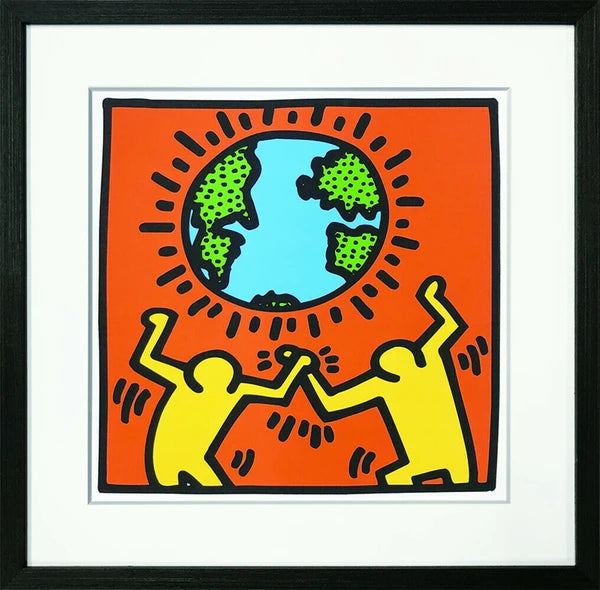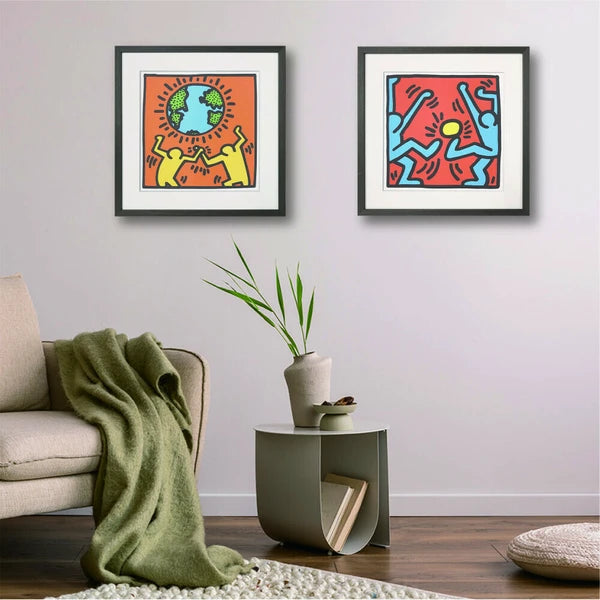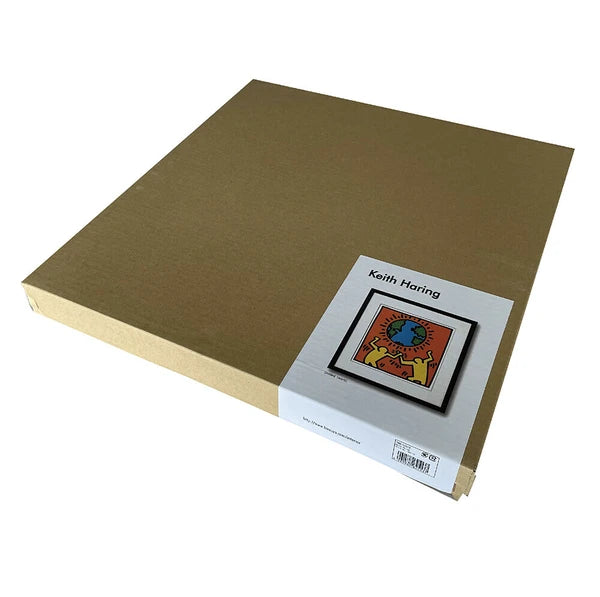Keith Haring
Art Frame Keith Haring Untitled, (world)
Art Frame Keith Haring Untitled, (world)
Couldn't load pickup availability
|
Keith Haring External dimensions: 425x425x32mm Keith Haring Born in 1958. (1958-1990) Along with Andy Warhol and Jean-Michel Basquiat, he is one of the leading artists of American pop art. In the 1890s, his graffiti art, called "Subway Drawings," painted on unused billboards in the New York subway system, became popular among New York commuters, and his comical and enjoyable graffiti made Haring famous. Haring seemed to see the subway as a "laboratory" for creating experimental works. His first significant solo exhibition was held at the Art Center in Pittsburgh in 1978. He moved to New York in 1978 and studied painting at the School of Visual Arts. He explored the possibilities of video and performance art, and also studied semiotics under Bill Beckley. He was also heavily influenced by the writings of William S. Burroughs, and was inspired by his experiments with cross-referencing and interconnecting images. In the early 1980s, Haring held a solo exhibition at Club 57. The event was photographed by photographer So Hirotomo. During this period, "Radiant Baby" became his symbol. Haring's bold lines, vibrant colors, and dynamic forms conveyed a strong message of life and unity. Haring also participated in the Times Square Exhibition, where he painted animal and human faces for the first time. That same year, his provocative New York Post-style collages of cut-up photocopied text became a hot topic. By 1982, he had built friendships with emerging artists of his generation, including Hutura, Kenny Scharf, Madonna, and Basquiat. Between 1982 and 1989, Haring created over 50 public works in cities around the world. On February 16, 1990, Haring died of AIDS-related complications. He is memorialized in the AIDS Memorial Quilt. At first glance, his style appears pop and glamorous, but as Haring himself is gay and infected with AIDS, it is imbued with his feelings of warning against discrimination and violence in modern society. Haring's themes include social and political issues such as "AIDS prevention awareness," "LGBT recognition," "nuclear abandonment," and "anti-apartheid." His work was characterized by a simple and bold use of color, using a method known as chalk outlines (white lines drawn at crime scenes to mark the location of victims). Accessories: string |
Share








